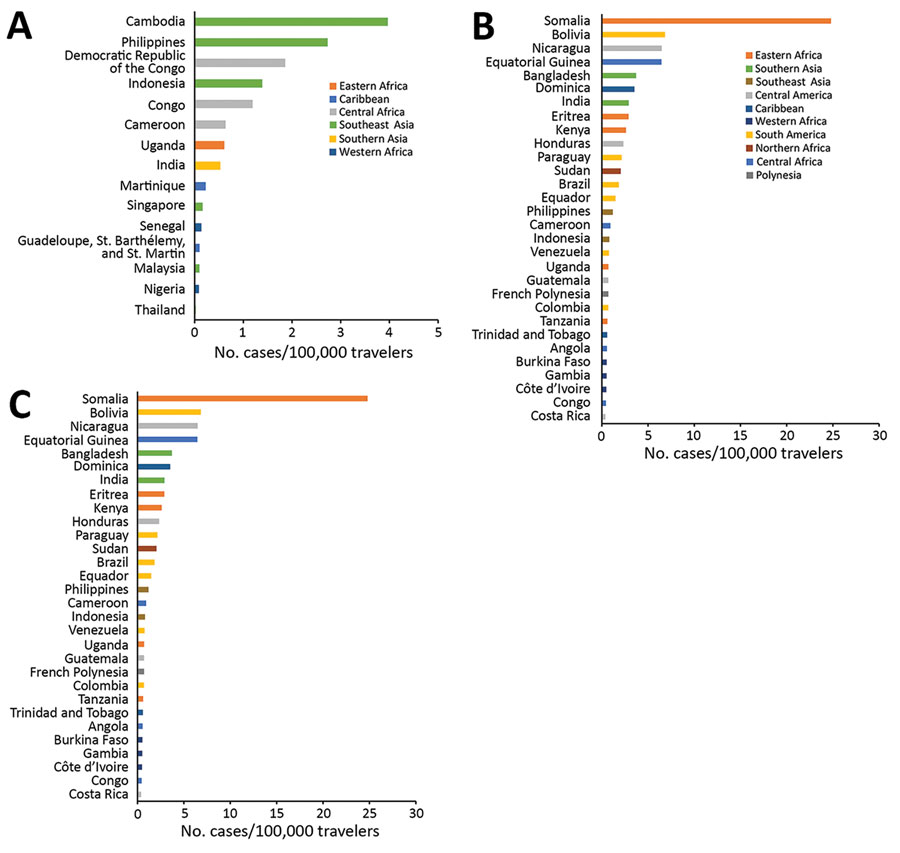Volume 26, Number 6—June 2020
Synopsis
Risks Related to Chikungunya Infections among European Union Travelers, 2012–2018
Figure 3

Figure 3. Rates of chikungunya infections among European travelers by country, region of infection, and epidemiologic period, 2012–2018. Shown are the 30 countries with the highest rates of infection for each period. A) 2012–2013; B) 2014–2015; C) 2016–2018.
Page created: May 18, 2020
Page updated: May 18, 2020
Page reviewed: May 18, 2020
The conclusions, findings, and opinions expressed by authors contributing to this journal do not necessarily reflect the official position of the U.S. Department of Health and Human Services, the Public Health Service, the Centers for Disease Control and Prevention, or the authors' affiliated institutions. Use of trade names is for identification only and does not imply endorsement by any of the groups named above.